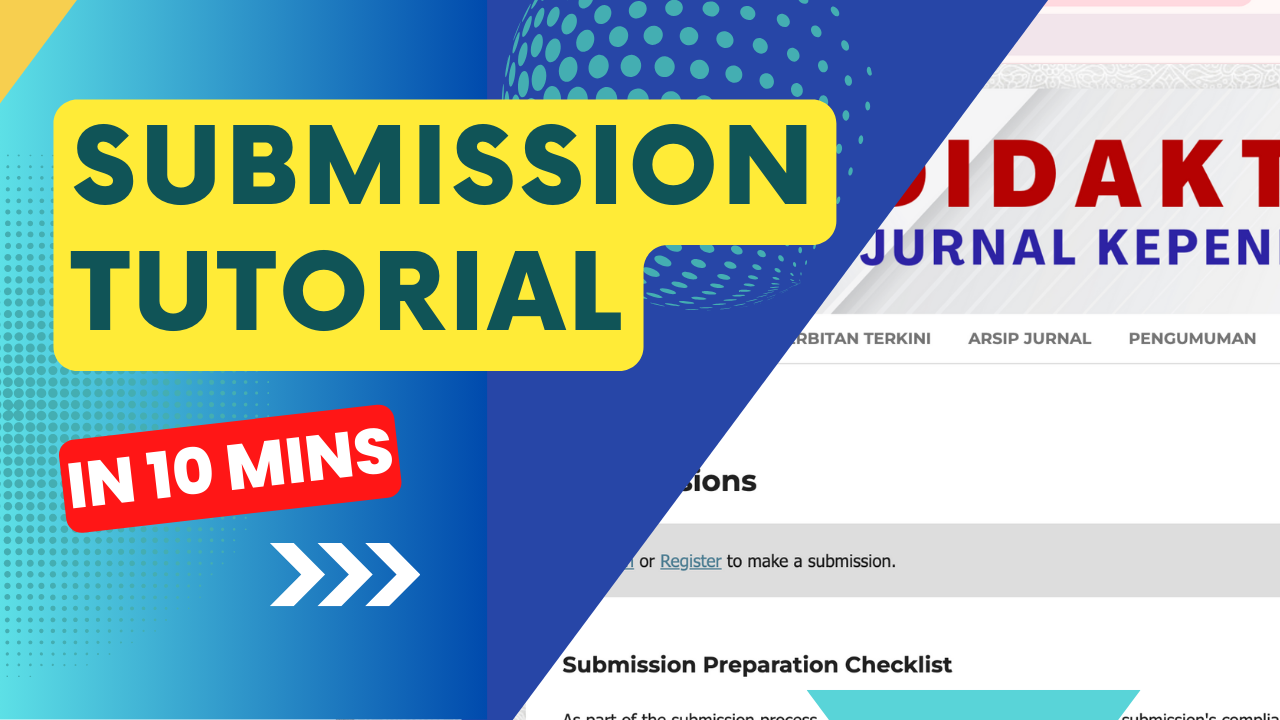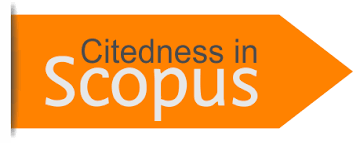Charting the Course of Active Learning Methods Research: A Comprehensive Bibliometric Analysis
Abstract
The purpose of this study was to describe the development map and research direction of active learning methods in publications indexed by the Scopus database. The technique in this study was to use bibliometric analysis to review all publications indexed in the Scopus database about active learning methods starting from 2000 to 2024. The data that has been obtained, is then analyzed using Microsoft Excel and R/R-Studio. VOSviewer is used to visually analyze the occurrence of keywords and document excerpts done stimulantly. The author finds 318 publications. Publications found correspond to predetermined subjects, functions, and criteria. The results of this study show that research with the theme of active learning methods was mostly carried out in 2020. The country that contributes to having the most publications is China, then in second place is the United States. The Sharif University of Technology is the highest affiliate with the most influence in publishing research on the theme. Shouraki, S.B. is the most relevant author. Iee Access is the most widely published writing source on active learning methods. The bibliometric analysis performed was limited to the Scopus database. Other national and international databases were not taken into account in the study. This study provides an overview of the literature available to researchers in the field of education and recommendations for future research.
Metrics
References
Abd. Wahab, N., Mohd Yusof, R., Zainuddin, Z., Shamsuddin, J. N., & Mohamad, S. F. N. (2022). Charting future growth for Islamic finance talents in Malaysia: a bibliometric analysis on the Islamic finance domains and future research gaps. Journal of Islamic Accounting and Business Research. https://doi.org/10.1108/JIABR-02-2022-0045
Al-Qahtani, A. A. Y., & Higgins, S. E. (2013). Effects of traditional, blended and e-learning on students’ achievement in higher education. Journal of Computer Assisted Learning, 29(3), 220–234. https://doi.org/10.1111/j.1365-2729.2012.00490.x
Albar, M. K. (2023). What is the study policy in Banyumas? Implementation of active learning strategies in junior high school. Journal of Law and Sustainable Development, 11(3). https://doi.org/10.55908/sdgs.v11i3.347
Ali, R. (2023). Institutional Adoption and Implementation of Blended Learning: Differences In Student Perceptions. Turkish Online Journal of Distance Education, 24(1), 37–53. https://doi.org/10.17718/tojde.973869
Alsubaie, F. B. S. M. (2022). The Educational Impact of Distance Learning during the COVID-19 Pandemic on Students’ Interaction in the Educational Process. World Journal of English Language, 12(7), 335–345. https://doi.org/10.5430/wjel.v12n7p335
Ataie, F., Shah, A., & Ali, N. I. (2018). Integration social media technology and ethical collaborative learning. International Journal of Engineering and Technology(UAE), 7(2), 12–15. https://doi.org/10.14419/ijet.v7i2.34.13898
Bayram, K. (2020). Islamic Finance Education: Theoretical Developments and Practical Challenges. Journal of King Abdulaziz University, Islamic Economics, 33(2), 145–155. https://doi.org/10.4197/Islec.33-2.11
Consorti, F., Mancuso, R., Nocioni, M., & Piccolo, A. (2012). Efficacy of virtual patients in medical education: A meta-analysis of randomized studies. Computers and Education, 59(3), 1001–1008. https://doi.org/10.1016/j.compedu.2012.04.017
Djeki, E., Dégila, J., Bondiombouy, C., & Alhassan, M. H. (2022). E-learning bibliometric analysis from 2015 to 2020. Journal of Computers in Education, 9(4), 727–754. https://doi.org/10.1007/s40692-021-00218-4
Fazakis, N., Kostopoulos, G., Karlos, S., Kotsiantis, S., & Sgarbas, K. (2020). An active learning ensemble method for regression tasks. Intelligent Data Analysis, 24(3), 607–623. https://doi.org/10.3233/IDA-194608
Ghani, A. R. A., Fatayan, A., Azhar, N. C., & Ayu, S. (2022). Evaluation of technology-based learning in an Islamic school. World Transactions on Engineering and Technology Education, 20(3), 190–195. https://www.scopus.com/inward/record.uri?eid=2-s2.0-85136257501&partnerID=40&md5=defca7bb2fa864cdfe3625d018bf48a0
Hong, L., Shang, B., Li, S., Li, H., & Cheng, J. (2023). Portfolio allocation strategy for active learning Kriging-based structural reliability analysis. Computer Methods in Applied Mechanics and Engineering, 412. https://doi.org/10.1016/j.cma.2023.116066
Izzatul Yuanita, D. (2020). Penerapan Strategi Pembelajaran Aktif dalam Meningkatkan Motivasi Belajar Aswaja Siswa di Madrasah. Bidayatuna: Jurnal Pendidikan Guru Mandrasah Ibtidaiyah, 3(1), 144. https://doi.org/10.36835/bidayatuna.v3i1.561
López-Fernández, D., Ezquerro, J. M., Rodríguez, J., Porter, J., & Lapuerta, V. (2019). Motivational impact of active learning methods in aerospace engineering students. Acta Astronautica, 165, 344–354. https://doi.org/10.1016/j.actaastro.2019.09.026
Mane, D. T. (2020). Active teaching learning methods for improving students engagement in the classroom. Journal of Engineering Education Transformations, 33(Special Issue), 425–428. https://doi.org/10.16920/jeet/2020/v33i0/150196
Oliveira, H., Sanches, T., & Martins, J. (2022). Problem-based learning in a flipped classroom: a case study for active learning in legal education in international law. Law Teacher, 56(4), 435–451. https://doi.org/10.1080/03069400.2022.2040934
Salehizadeh, M. R., & Behin-Aein, N. (2014). Effects of cooperative learning plus inquiry method on student learning and attitudes: A comparative study for engineering economic classrooms. European Journal of Engineering Education, 39(2), 188–200. https://doi.org/10.1080/03043797.2013.838542
Studi, P., Konseling, B., & Singkawang, S. (2018). Model Pembelajaran Active Learning Dengan Strategi Pengajuan Pertanyaan Untuk. 12(1).
Takmiliyah, D., & Kota, D. I. (2020). Jurnal Edukasi Islami Jurnal Pendidikan Islam Vol . 09 / No . 01 , Februari 2020 Metode Pembelajaran Aktif … Konsep Kaderisasi Ulama …. 09(01), 71–86.
Copyright (c) 2023 Nurul Latifatul Inayati, Vanneza Diva Ariona

This work is licensed under a Creative Commons Attribution 4.0 International License.
Dengan mengirimkan naskah artikel, berarti penulis setuju dengan segala kebijakan yang ditetapkan oleh jurnal dan penerbit.
Penulis menyatakan bahwa:
- kebijakan ini telah diketahui dan disetujui bersama oleh semua penulis;
- naskah artikel belum dipublikasikan secara resmi sebelumnya di media ber-ISSN atau ber-ISBN yang terdaftar, kecuali dalam bentuk abstrak atau sebagai bagian dari materi kuliah, atau skripsi/tesis/disertasi yang tidak diterbitkan;
- naskah tidak sedang dalam proses editorial dan dipertimbangkan untuk publikasi di tempat lain;
- publikasi naskah ini telah disetujui oleh semua penulis, institusi afiliasi penulis, otoritas yang bertanggung jawab, dan lembaga di mana kegiatan telah dilakukan;
- naskah berisi materi yang aman dari pelanggaran hak cipta;
Perjanjian Hak Cipta dan Lisensi
- Penulis memiliki hak cipta dan hak kepemilikan lainnya yang terkait dengan artikel.
- Penulis memiliki hak dan diizinkan untuk menggunakan substansi artikel untuk karya-karya penulis berikutnya, termasuk untuk keperluan bahan/materi kuliah dan buku.
- Penulis menyerahkan hak publikasi pertama kepada jurnal dengan di bawah Lisensi Creative Commons (CC BY 4.0).
Pernyataan Lisensi CC BY 4.0
Anda diperbolehkan:
- Berbagi — menyalin dan menyebarluaskan kembali materi ini dalam bentuk atau format apapun;
- Adaptasi — menggubah, mengubah, dan membuat turunan dari materi ini untuk kepentingan apapun, termasuk kepentingan komersial.
Pemberi lisensi tidak dapat mencabut ketentuan di atas sepanjang Anda mematuhi ketentuan lisensi berikut ini.
- Atribusi — Anda harus mencantumkan nama yang sesuai, mencantumkan tautan terhadap lisensi, dan menyatakan bahwa telah ada perubahan yang dilakukan. Anda dapat melakukan hal ini dengan cara yang sesuai, namun tidak mengisyaratkan bahwa pemberi lisensi mendukung Anda atau penggunaan Anda.
- Tidak ada pembatasan tambahan — Anda tidak dapat menggunakan ketentuan hukum atau sarana kontrol teknologi yang secara hukum membatasi orang lain untuk melakukan hal-hal yang diizinkan lisensi ini.






.png)








